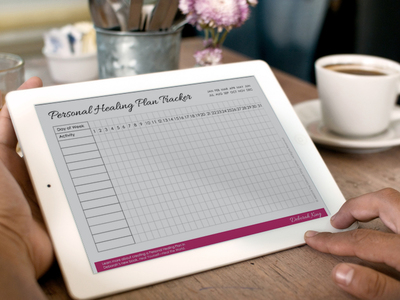4 Levels of Perception to Transform Your Perspective During the Pandemic
There’s no doubt that covid-19 has taken up all the air in the room these days, but know that there are different ways of viewing the situation . . . and new perspectives that will let you breathe more easily.
Let’s take a look at what’s happening from the four different directions of the medicine wheel. In Native American symbology, the four cardinal points (plus Mother Earth, Father Sky, and the Spirit Tree) embody all the dimensions, everything from your health to the cycles of life. Think of how many things you know that are comprised of fours: the four seasons, the four directions, the four stages of life (birth, youth, adult, and death), and the four basic aspects of life: physical, intellectual, emotional, and spiritual.
Add to that the four brains, and their corresponding levels of perception. Here’s how you can shift your perspective on the pandemic:
At the lowest level, you perceive the world through the reptilian brain, comprised of the cerebellum and the brain stem on the physical level. In the energy world, this brain is connected to the first chakra. At a deep instinctual level, survival is uppermost. You need food and water and shelter from the storm. You’re on the lookout to avoid danger, ever ready for fight or flight. That’s the basic level of the evening newscast, the literal and physical level of what’s happening. What parts of the body is the virus affecting? Do any treatments work? What about your underlying condition? How many deaths have been reported in your local area? Is it safe to eat take-out?
The reptilian brain works through action-reaction. The governor says stay at home. You immediately react. Of course, I want to avoid danger; I’ll socially distance and wear a mask when I have to go out. Or hell no, you can’t restrict my freedom and tell me what to do while my business is collapsing. Danger to the left, danger to the right. You’re not looking for causes, for underlying meaning, for spiritual connection; you’re just wanting things to get back a.s.a.p. to “normal.” Meaning, safe.
As you rise a bit in consciousness, you enter your mammalian brain and the second level of perception. Physically, this is the limbic system, the structures in the brain involved in emotions and memory. Energetically, it is connected to the second chakra and to your mind and emotions. Here you’re going from the purely physical level to words and their meaning, and to your feelings. “Shelter in place,” for example, can evoke a feeling of protection and security, or a stifling feeling of imprisonment, depending on your perspective.
You seek solutions at this level; you’re not just running from fear but looking for possibilities. Maybe you are helping get surplus food to those in need. Or you’re a formerly retired health care worker who has returned to the front lines. Or you’re making masks for your local hospital.
You seek solutions to keeping yourself healthy, beyond simply social distancing. You combat your concerns about the virus by boosting your immune system—eating foods rich in antioxidants, taking supplements that support your health. If your livelihood has been compromised, you are busily working to secure PPP and other disaster loans to cover the gap.
Rising higher in awareness, you come into the human brain, which is the neocortex, the layers involved in the functions of the higher brain, such as perceiving with your senses, thinking, reasoning and language. This third level of perception is connected to your sixth chakra. You have the vision to frame your time at home as an opportunity to uplevel your care for yourself. You enjoy offerings online, from art to yoga to music. You are grateful for having the time to stop, to take stock, to clean out what is no longer wanted or needed in your life and embark on personal projects you simply never had time for before. And you continually find ways to serve others, reaching out on Facetime to an elder who is home alone, or helping home school a child online so his parents can get some work done.
You can envision this “time out of time” as a spiritual retreat, and do ceremony, meditation, soul-searching, diving deeper into your spiritual lineage or exploring new ones. You combat loneliness and isolation by connecting to others via WhatsApp or FaceTime or Zoom. You attend spiritual teachings you wouldn’t have had time for before. (Come to my teaching on The Spiritual Gifts today at 1:00 pm PDT or watch the replay later) You participate in online group meditations. (Join mine every Thursday at 1:00 pm PDT) In the Native American tradition, and most indigenous traditions, the importance of community is a bedrock of belief.
Here is where your beliefs are, as well as your ability to go beyond your ingrained beliefs, beyond your behavioral patterns, and redirect your efforts to walking the path.
And then you reach the fourth level of perception, the fourth brain, called the “God brain” by neuroscientists. Known more commonly as the prefrontal cortex, this is the part of the cerebral cortex that covers the front of the frontal lobe. Complex cognition, social behavior, and how you express your Self are all here, and are connected to the seventh chakra. It is the perspective of total wholeness. All is well at this level. Spirit is unfolding in the play of maya. You are living through your heart and know the truth of the heart. The virus is a small pinprick in your awareness, not a tidal wave of fear.
The God brain knows we are all One, and all is in Divine order. All those ads on TV blaring “we are all in this together” are more right than they know. At the energetic level, you trust the Universe, trust Spirit, to provide whatever you need to grow in awareness, to open your heart further, and to see the whole picture.
Remember, the more peaceful you are, the calmer you are, the more you can live with the silence within, the better prepared you are for whatever happens next. And the easier it will be for you to handle what is happening now, in your home, in your mind, and in your heart. You are never alone; Spirit is always with you.



















